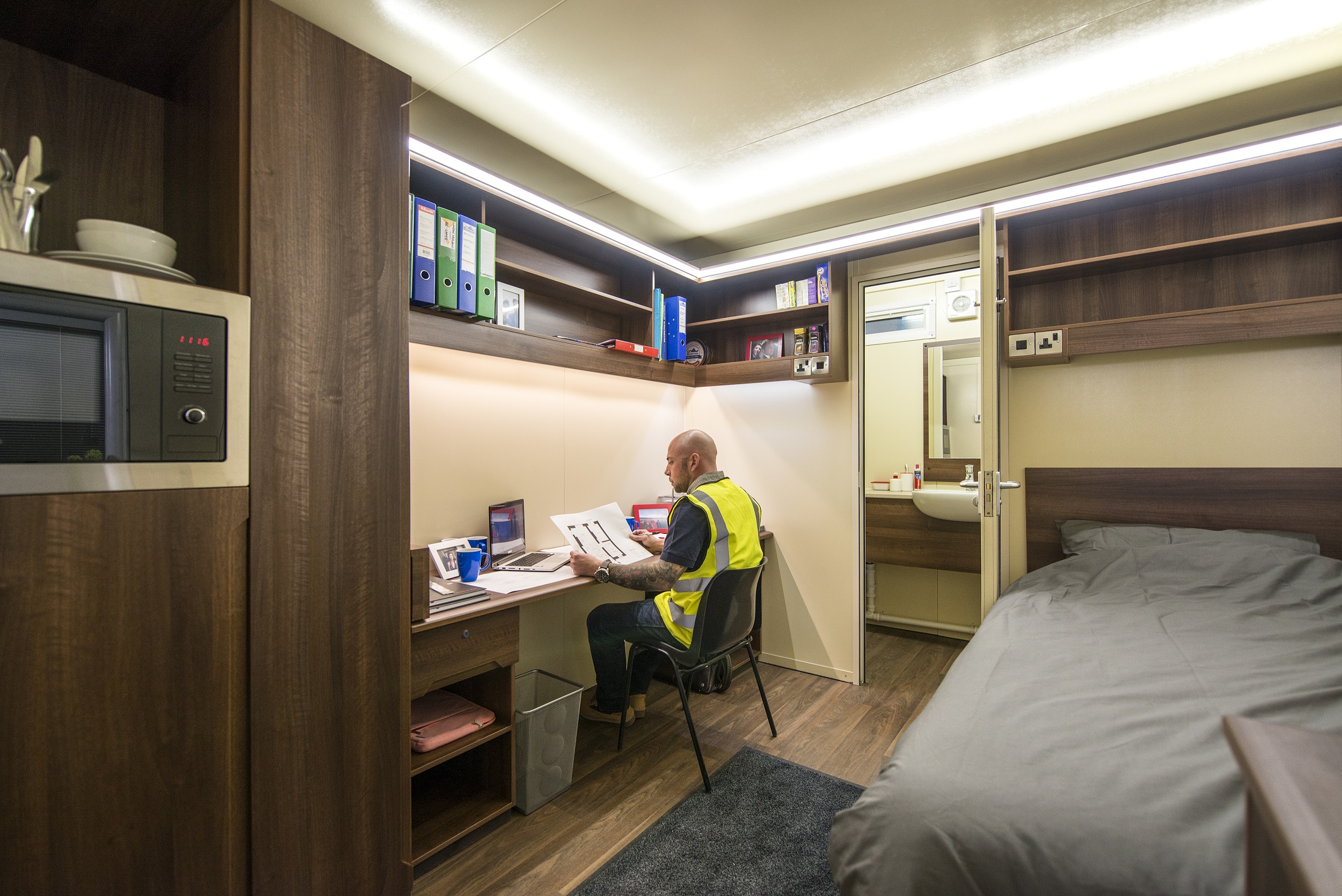Pandemic safety for on-site accommodations
[edit] Introduction
Ensuring on-site accommodation is both safe and fit for purpose is of huge importance. With additional requirements brought to light due to the COVID-19 pandemic, it has never been more essential for employers to follow all of the necessary health and safety steps to protect their workers. When it comes to creating safe on-site accommodation that is also COVID-secure, construction companies need to ensure that they have enhanced health and safety procedures in place.
[edit] Provide additional PPE for all staff
Personal protective equipment (PPE) is incredibly important not just within the workplace but also when staff are using on-site accommodation. PPE such as masks should be provided, regularly disposed of and replaced to ensure employees are protected while they work.
[edit] Keep facilities clean
When providing on-site accommodation for employees, construction companies need to ensure that these facilities are regularly cleaned and disinfected. Before employees enter the facilities a deep, sanitising clean should be carried out. This should be followed by regular cleaning throughout the use of the facilities to prevent the spread of bacteria.
[edit] Make use of safety signs
Not only are standard health and safety measures important in the workplace and in on-site accommodation, but it’s also important that employees are reminded of the restrictions in place to protect them and others against COVID - for example, social distancing measures and the introduction of hand sanitising stations. Strategically place safety signs and instructions around the facilities to make it clear what is expected of employees.
[edit] Stock up on sanitising supplies
All buildings including site accommodation should be well-stocked with hand sanitiser and plenty of other hygiene products to make it easy for employees to regularly keep clean but also keep their living and working spaces clean.
[edit] Limit contact where possible
On-site accommodation for those working in construction provides employees with all of the facilities required in one individual cabin, preventing the need of sharing communal facilities such as toilets, kitchens and showers.
If this isn’t possible and communal facilities are necessary, a rota should be created to limit the number of staff members that are allowed to share the same facilities at once. This also serves as a measure to avoid large numbers of people being on-site at the same time.
[edit] Plan the layout and accessibility of accommodation areas
The layout and occupancy of any on-site accommodation should be carefully planned to ensure that it is in line with the current COVID-19 guidelines. This might require different locations or camps to keep teams isolated from each other.
This is particularly important if becomes necessary to bring in seasonal workers from overseas, as they may be required to quarantine upon arrival. It is also helpful in situations where shielding must take place when someone may need to self-isolate. It is important to pay close attention to who is entering and leaving the site and accommodation areas at all times so it is possible to control and prevent any viral transmission.
[edit] Ensure the correct temperature is maintained
When participants were asked to rate the importance of certain physical factors in the workplace environment, the majority of people chose comfortable temperature as their biggest concern. Air ventilation is equally important, especially in relation to COVID-19, making it essential that on-site accommodation is well-ventilated and the temperature is well maintained to keep workers comfortable and prevent any potential spread of bacteria.
[edit] Related articles on Designing Buildings
Featured articles and news
RTPI leader to become new CIOB Chief Executive Officer
Dr Victoria Hills MRTPI, FICE to take over after Caroline Gumble’s departure.
Social and affordable housing, a long term plan for delivery
The “Delivering a Decade of Renewal for Social and Affordable Housing” strategy sets out future path.
A change to adoptive architecture
Effects of global weather warming on architectural detailing, material choice and human interaction.
The proposed publicly owned and backed subsidiary of Homes England, to facilitate new homes.
How big is the problem and what can we do to mitigate the effects?
Overheating guidance and tools for building designers
A number of cool guides to help with the heat.
The UK's Modern Industrial Strategy: A 10 year plan
Previous consultation criticism, current key elements and general support with some persisting reservations.
Building Safety Regulator reforms
New roles, new staff and a new fast track service pave the way for a single construction regulator.
Architectural Technologist CPDs and Communications
CIAT CPD… and how you can do it!
Cooling centres and cool spaces
Managing extreme heat in cities by directing the public to places for heat stress relief and water sources.
Winter gardens: A brief history and warm variations
Extending the season with glass in different forms and terms.
Restoring Great Yarmouth's Winter Gardens
Transforming one of the least sustainable constructions imaginable.
Construction Skills Mission Board launch sector drive
Newly formed government and industry collaboration set strategy for recruiting an additional 100,000 construction workers a year.
New Architects Code comes into effect in September 2025
ARB Architects Code of Conduct and Practice available with ongoing consultation regarding guidance.
Welsh Skills Body (Medr) launches ambitious plan
The new skills body brings together funding and regulation of tertiary education and research for the devolved nation.
Paul Gandy FCIOB announced as next CIOB President
Former Tilbury Douglas CEO takes helm.
UK Infrastructure: A 10 Year Strategy. In brief with reactions
With the National Infrastructure and Service Transformation Authority (NISTA).























